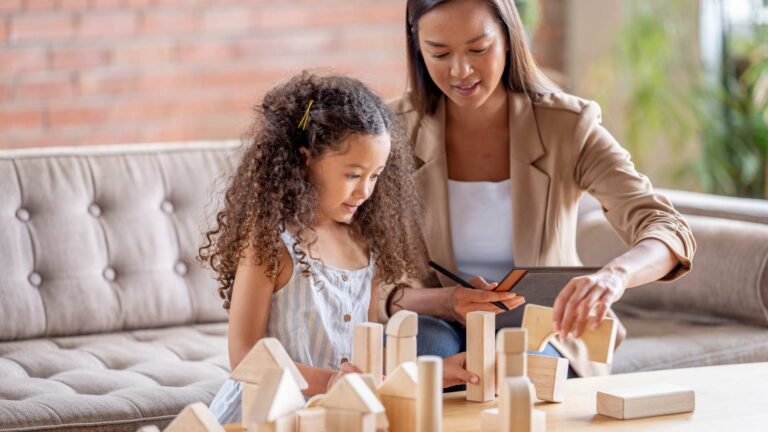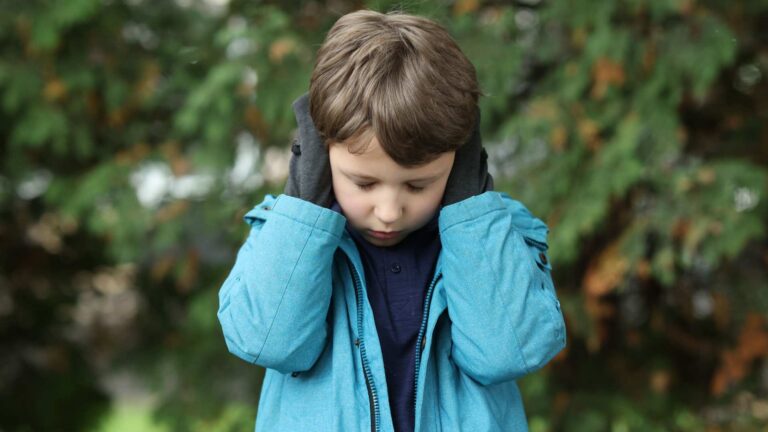Transitioning from diapers to using the potty is a milestone for all children and their parents, signifying a step toward greater independence. However, for children with a developmental disorder such as autism, potty training can present additional challenges and complexities. Autism and potty training require implementing behavioral skills that can hinder the process for children on the spectrum.
Individuals with Autism Spectrum Disorder (ASD) frequently face challenges grasping the context and utility of actions, which can hinder potty training. Fortunately, Applied Behavior Analysis (ABA) therapy exists to assist in acquiring these skills. This structured, science-based approach systematically addresses problematic behaviors and intervenes dynamically in reducing them. Through ABA therapy, children can learn healthier behaviors to deal with the issues and anxiety imposed by autism.
ABA therapy has proven to be a valuable method for successfully addressing the challenges in day-to-day life, including the complexities of autism and potty training. At Texas ABA Centers, we can provide the support you need to help your child transition from diapers to potty training through our ABA therapy. Additionally, we work on enhancing social and communication skills, increasing desired behaviors, equipping your child with tools to navigate complexities, and improving the overall quality of life for your child and your family, all while setting the foundation for a brighter future.
This blog will delve into the challenges that can arise in autism and potty training. Moreover, we will provide ten techniques, endorsed by our Applied Behavior Analysis professionals, that can assist parents in guiding their children toward achieving this crucial developmental milestone.
Autism and Potty-Training Issues
- Communication Challenges: For most children with autism spectrum disorder (ASD), communication presents a significant hurdle, particularly regarding verbal communication. This difficulty can make expressing needs and desires challenging and frustrating. In the context of autism and potty training, conveying the need to use the bathroom can be intricate. Additionally, understanding the hygiene-related reasons for using the toilet can be challenging. Just as verbal expression can be complex for individuals with autism, so is comprehending and following verbal instructions. These complexities amplify the intricacy of the potty-training concept for children and families dealing with autism.
- Hypersensitivity: Heightened sensitivity to stimuli such as sounds, textures, and lights frequently characterizes individuals with autism. In the context of autism and potty training, this sensitivity can significantly impact children with autism. Factors like the cold temperature of the toilet seat, the sound of flushing toilets, the texture of bathroom rugs, or even the brightness of bathroom lights can all play a role. These sensory sensitivities can result in aversion on the part of the child toward using the bathroom, thereby complicating the transition process.
- Repetitive Behaviors: Many children on the autism spectrum often engage in repetitive behaviors and fixations on specific topics. Frequently, these behaviors can interfere with and complicate autism and potty training. Some of these behaviors include repeatedly flushing the toilet, fixating on specific bathroom details or objects, and turning the faucet on and off. These behaviors can represent a distraction from successfully using the toilet.
- Disruption of Routines: Routines are highly beneficial for children with autism, and specialists recommend them to support their progress. However, the transition from diapers to potty training disrupts this routine. This shift in the context of autism and potty training can overwhelm the child and may lead to resistance toward change.
ABA Therapy: A Crucial Tool for Autism and Potty-Training Transition
ABA therapy is an indispensable tool for teaching a child with autism to transition from diapers to using the toilet. ABA therapy provides a comprehensive framework for addressing autism and potty-training challenges. In this guide, we will introduce ten strategies employed by ABA therapy professionals to teach this skill, offering valuable support for parents:
- Getting a Head Start: Early intervention offers numerous advantages for children with developmental disorders, particularly those with autism. Conforming to the National Institute of Child Health and Human Development (NICHD), addressing learning and skill acquisition in early childhood increases the likelihood of achieving better long-term outcomes. At Texas ABA Centers, we recommend initiating the training process as soon as you observe signs of interest in the toilet, more extended periods of staying dry, or discomfort with diapers.
- Utilize Visual Supports: Schedules and step-by-step visual guides are beneficial tools for autism and potty training. To create these visual aids, use photos, symbols, and images to depict the toilet training process, such as sitting on the toilet, flushing, handwashing, and critical steps. In the case of a visual schedule, it provides a sense of predictability that aids the child in comprehending the expectations for this activity.
- Establish a Bathroom Routine: As mentioned earlier, routines offer many benefits to children with autism by reducing the anxiety of the unexpected and preparing them for daily activities. Including bathroom breaks in the daily routine can be highly beneficial in the context of autism and potty training. Schedule bathroom breaks after meals and before bedtime. Be patient and consistent in following this schedule and utilize a visual plan for support.
- Explain Potty Training with Social Stories: Individuals with autism often face challenges in verbal communication and following verbal instructions. Social stories can be a highly effective tool for explaining new contexts. Social stories depict situations to children on the spectrum and facilitate their understanding of expected behaviors in those situations.
Creating a custom-tailored story to explain toilet training includes details about using the toilet, flushing, cleaning oneself, and washing hands. You can read this story regularly to familiarize your child with the process. Check out these teaching stories templates by Autism Speaks to get inspiration.
- Eliminate Sensory Triggers for Your Child: Sensory sensitivity can impact the transition process in the case of autism and potty training. Identifying sensory triggers that typically affect your child and making necessary accommodations before starting potty training is essential.
If your child is sensitive to textures, use softer toilet paper, remove bathroom mats, or replace them with gentler ones. If your child doesn’t like bright lights, consider changing the bathroom lighting to a softer or warmer tone. Adding colorful mats or decorative toilet covers can make the experience more enjoyable.
One of the principles of ABA therapy is to address the root causes of challenging behaviors, which often stem from discomforts like sensory sensitivities.
- Employ Positive Reinforcement: Offering rewards for desired behaviors is a technique commonly used in ABA therapy, and it can be a valuable approach for autism and potty training. Providing rewards after the execution of a desired action teaches children that repeating these behaviors is beneficial, increasing the likelihood of repetition and eventually becoming a habit.
Reward systems can include stickers, small toys, or their favorite snack. Identifying a highly motivating reward for your child is essential. For example, in autism and potty training, you can start by offering a reward each time your child expresses the need to use the bathroom.
- Avoid Pressure: In autism and potty training, everything is a process, and patience is paramount. It may take a bit more time and present challenges to reach that goal, but with consistency and the right resources, parents and kids with autism can achieve it. Be patient with your child and be prepared to accept setbacks. Pressuring the situation will only trigger anxiety in your child. It’s okay to take a step back and give your child time to adjust and start over. The goal is not to do it quickly but to achieve it successfully!
- Utilize ABA Therapy Sessions for Learning: Parents are encouraged to participate and learn from the therapists during ABA therapy sessions at Texas ABA Centers. Parent and caregiver training is essential for implementing and applying the strategies professionals employ in daily life. This collaborative effort ensures better learning outcomes for autism and potty training.
- Foster Independence: As your child progresses in toilet training, encourage increasing levels of independence. ABA therapists recommend assigning more responsibilities as the child advances in learning. For instance, allowing the child to adjust their clothing, flush the toilet, wipe, and wash their hands independently while offering rewards for these actions can enhance positive outcomes. Dividing a goal into more manageable and achievable tasks makes it more accessible and highly motivating, facilitating a smoother transition.
- Monitor Progress: ABA therapists diligently collect information during each session. Therapists record every successful or unsuccessful attempt by the child at any step of the toilet process. This data assists in tracking overall progress in ABA therapy and adapting any necessary changes to ensure continued advancement.
Texas ABA Centers, Autism and Potty Training
ABA therapy is a remarkable tool when addressing autism and potty training and facilitating other learning processes to promote independence in children with autism. At Texas ABA Centers, our therapists bring experience, expertise, and compassion to ensure a successful transition to toilet training. We equip parents with the necessary tools for long-term learning and teach skills to enhance personal hygiene, communication, and independence over time.
If you’d like to learn more about our autism services, please don’t hesitate to contact us at (877) 771 – 5725 for a free consultation or complete the form on our website for additional information.









